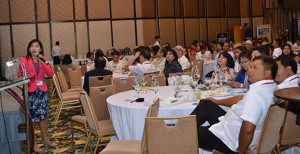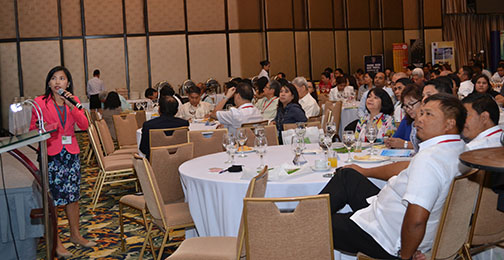
For the Philippines to benefit from the Association of Southeast Asian Nations (ASEAN) economic integration in 2015, it will have to remove or at least revisit outdated transport policies, according to an industry analyst.
In a recent presentation at the PortCalls-organized Mindanao Shipping Conference 2014 held in Cagayan de Oro City, Dr Adoracion Navarro, senior research fellow at the Philippine Institute for Development Studies (PIDS), identified restrictions to full integration, such as the country’s foreign ownership requirements for companies offering logistics services and the cabotage policy.
“The 60-40 equity rule on domestic logistics services as well as the cabotage policy will make 100% foreign entry not possible in the near to medium term,” pointed out Navarro.
As it is, logistics companies in ASEAN member countries should by 2013 allow 70% foreign equity participation, she noted.
Meanwhile, Navarro said PIDS is not pushing for “blanket lifting of cabotage restrictions” but merely advocating a “revisit” of the issue.
Instead of immediate lifting of the policy, she said PIDS is reaching out to the Maritime Industry Authority to look at phased lifting for some types of exports or for some cargo volume.
Navarro cited the case of Indonesia, where the cabotage policy was lifted for oil and petroleum shipments.
What’s lacking in addressing the cabotage issue, she said, is “political will of the decision makers, the legislators, including decision makers in the executive (department).”
Other restrictions to economic integration are Presidential Decree 1466, which states that government cargoes can only be transported by Philippine-flagged ships; port regulator Philippine Ports Authority also being a port operator; the “one port, one operator” policy in ports; airport infrastructure capacity constraints; and road traffic congestion, Navarro said.
On the other hand, she cited a freight forwarders’ survey conducted in 2011 which identified the barriers in setting up local operations in other ASEAN countries: obtaining a license from a professional body; meeting minimum capital requirements; adhering to administrative and legal regulations in setting up a partnership; and meeting restrictive local labor employment regulations.
And once able to penetrate an ASEAN country, a Philippine company faces other restrictions, such as the need to account for differences in commercial practices and adhere to restrictive legal systems and contracting procedures, as well as the need to manage the lack of transparency, inconsistencies, or confusion in regulations, and address delays in payment (banking practices and regulations).
In the World Bank Logistics Performance Index 2014, the Philippines ranked fourth among the 10 members of ASEAN in logistics performance.
Navarro said the Philippines was part of the CLMP (Cambodia, Laos, Myanmar, the Philippines) grouping, ASEAN countries lagging behind in logistics performance.
Opportunities
Meanwhile, ASEAN integration will also create trading opportunities for Philippine goods and boost the need for carrier services.
“Greater trade also means greater transport facilitation,” Navarro said.
Potential exports to the 600-million consumer market include principal goods such as electronic components, agricultural products, fishery products, apparel and clothing, metal components, and petroleum products, according to Navarro.
Moreover, integration will open up short sea shipping networks between the Philippines and its ASEAN neighbors.
One of these networks is the General Santos-Davao-Bitung roll-on/roll-off route, a recommended priority lane in ASEAN that has started operations this month. – Roumina Pablo





